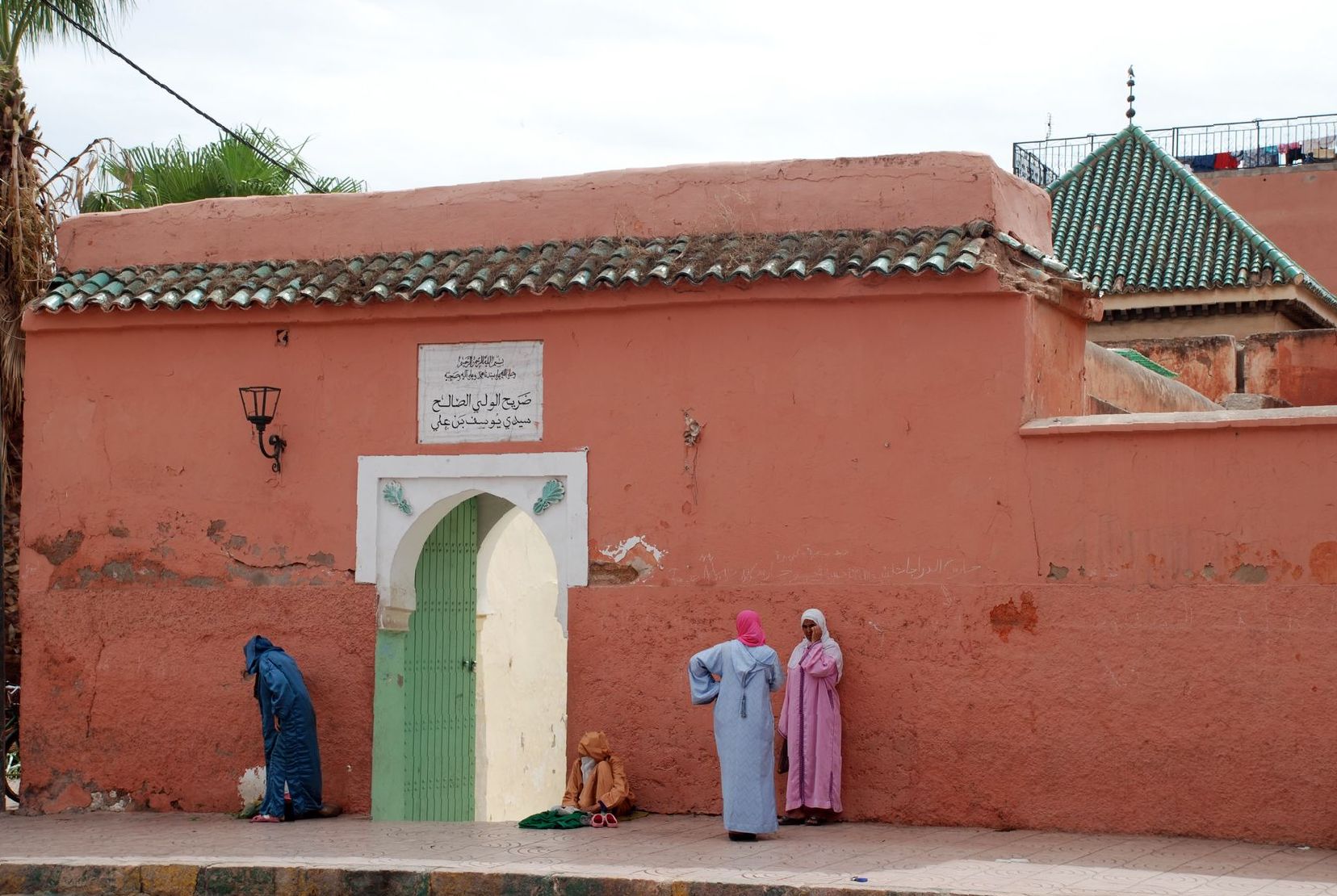Sidi Youssef Ben Ali on:
[Wikipedia]
[Google]
[Amazon]
 Sidi Yusuf ibn 'Ali as-Sanhaji () is a
Sidi Yusuf ibn 'Ali as-Sanhaji () is a
 Sidi Yusuf ibn 'Ali as-Sanhaji () is a
Sidi Yusuf ibn 'Ali as-Sanhaji () is a wali
A wali (''wali'' ar, وَلِيّ, '; plural , '), the Arabic word which has been variously translated "master", "authority", "custodian", "protector", is most commonly used by Muslims to indicate an Islamic saint, otherwise referred to by the ...
( Muslim mystic or saint) who was born in Marrakesh, Morocco
Morocco (),, ) officially the Kingdom of Morocco, is the westernmost country in the Maghreb region of North Africa. It overlooks the Mediterranean Sea to the north and the Atlantic Ocean to the west, and has land borders with Algeria t ...
and died there in 1196 CE. He is considered one of the Seven Saints of Marrakesh, and one of the administrative divisions
Administrative division, administrative unit,Article 3(1). country subdivision, administrative region, subnational entity, constituent state, as well as many similar terms, are generic names for geographical areas into which a particular, ind ...
of Marrakesh is named after him.
Biography
Yusuf ibn 'Ali was born in Marrakesh to a family ofSanhaja
The Sanhaja ( ber, Aẓnag, pl. Iẓnagen, and also Aẓnaj, pl. Iẓnajen; ar, صنهاجة, ''Ṣanhaja'' or زناگة ''Znaga'') were once one of the largest Berber tribal confederations, along with the Zanata and Masmuda confederations. Ma ...
Amazigh
, image = File:Berber_flag.svg
, caption = The Berber ethnic flag
, population = 36 million
, region1 = Morocco
, pop1 = 14 million to 18 million
, region2 = Algeria
, pop2 ...
origin and lived in the city his whole life. He studied under Sheikh Abu 'Usfur. He was afflicted at a young age with leprosy
Leprosy, also known as Hansen's disease (HD), is a long-term infection by the bacteria ''Mycobacterium leprae'' or ''Mycobacterium lepromatosis''. Infection can lead to damage of the nerves, respiratory tract, skin, and eyes. This nerve damag ...
, for which he was allegedly banished from his family and from living in the city. He took up residence in a nearby cave or in a hollow that he dug himself, in the lepers' quarter outside the southern city gate of Bab Aghmat. Despite his ill health, he lived longer than anyone expected and many began to believe he possessed powers to resist hunger and disease. Locals came to visit him in his cave seeking guidance, and he came to be known also as ''Mul al-Ghar'' (meaning roughly "Man of the Cave"). He died in 1196 CE and was buried in or near the cave where he lived.
Legacy
Yusuf ibn 'Ali's reputation grew over time and he became one of the most celebrated of the many ''awliya'' ("saints") of his native city. In the 16th century the Saadian sultan Moulay Abdallah al-Ghalib built a mausoleum and zawiya over the cave where he was buried. The sultan's reasons for this are unclear but may have been a conciliatory gesture over his displacement of the leprous population from Bab Aghmat toBab Doukkala
Bab Doukkala () is the main northwestern gate of the medina (historic walled city) of Marrakesh, Morocco.
Description
The gate dates back to around 1126 CE when the Almoravid emir Ali ibn Yusuf built the first walls of the city. Doukkala, w ...
. Later on, he was counted among the "Seven Saints" of Marrakesh and his tomb became the first stop in a yearly pilgrimage, or ''ziyara
In Islam, ''ziyara(h)'' ( ar, زِيَارَة ''ziyārah'', "visit") or ''ziyarat'' ( fa, , ''ziyārat'', "pilgrimage") is a form of pilgrimage to sites associated with Muhammad, his family members and descendants (including the Shī'ī Imā ...
'' (), instituted by the Alaouite sultan Moulay Isma'il in the late 17th and early 18th century. Today, the neighbourhood and suburb around the mausoleum is part of the local prefecture of Sidi Youssef Ben Ali, named after the saint.
References
{{Reflist Moroccan Sufis People from Marrakesh